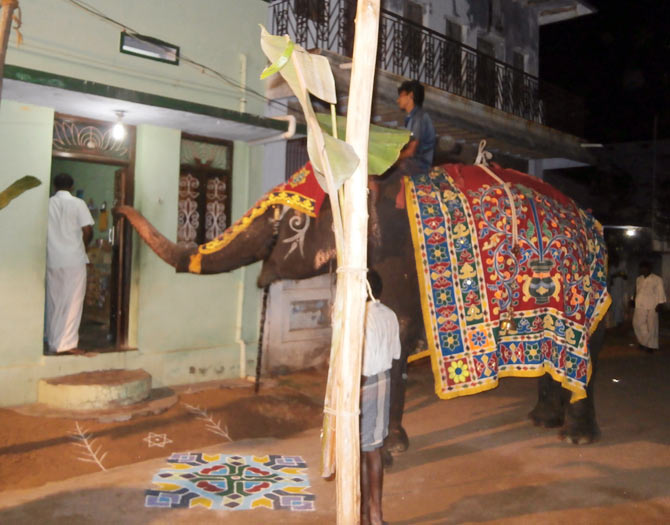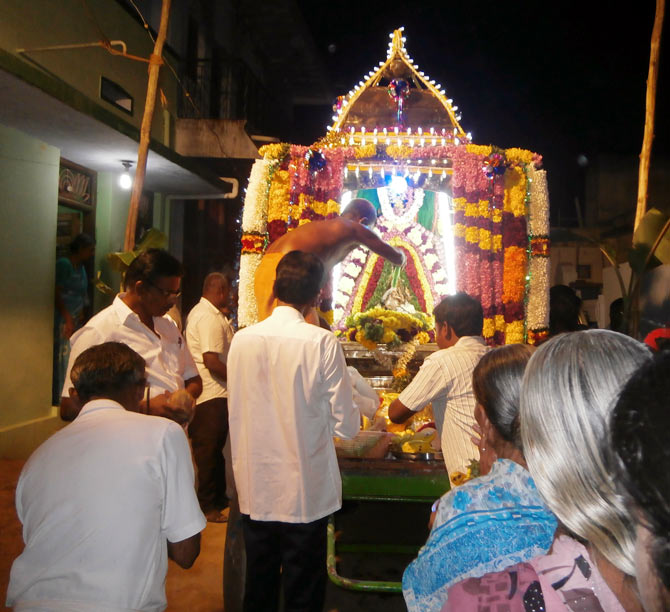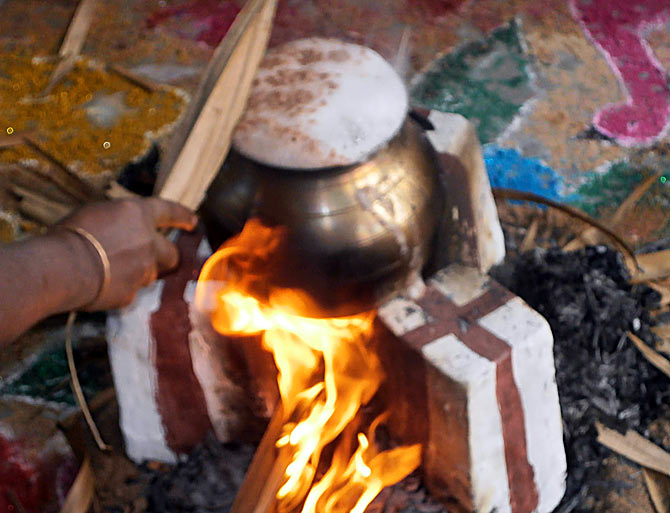 | « Back to article | Print this article |
IN PICS: How rural Tamil Nadu celebrates Pongal
A Ganesh Nadar takes us on a trip to his hometown, Panickanadarkudieruppu, to reveal how rural Tamil Nadu celebrates the harvest festival.
On the eve of Pongal young girls in the village spend hours putting kolam (rangoli) in front of their homes to welcome Lord Ganesha, their first visitor for Pongal, which is the first day of the Thai month (the tenth month of the Tamil calender which commences mid-January each year).
At 10 pm a solitary drummer walks the streets of the village followed by a man who drags a flame behind him.
This is to signal that the Lord will be coming this way and all evil spirits beware.
Please click NEXT to continue reading...
IN PICS: How rural Tamil Nadu celebrates Pongal
Midnight, a well decorated Lord Ganesha leaves His temple in His chariot to visit His devotees.
Through the year devotees visit Him but on the auspicious occasion of Pongal He visits them.
The Lord's procession is led by an elephant naturally; he is called 'Gana Esha' which literally means Elephant God.
The band follows the elephant, playing classical, religious music and occasionally particular ragas that they have practiced over time.
It's a band on its feet for most of the night.
IN PICS: How rural Tamil Nadu celebrates Pongal
Lord Ganesha's chariot stops under a specially put up pandal (canopy), and all the people in that street line up to make their offerings and seek His blessings.
Young village boys collect donations which are used for the festival expenses.
Through the entire month of Margazhi -- a holy month that starts December 15 and ends January 13, young boys and old men sing bhajans (devotional songs) from 5.30 am as they walk through the entire village.
These bhajans are meant to cleanse the village of evil spirits and welcome good spirits.
The bhajan group's final round is with Lord Ganesha on Pongal day.
And here they come, yelling at the top of their voices, most of them out of tune but what they lack in music sense they make up with their enthusiasm.
IN PICS: How rural Tamil Nadu celebrates Pongal
Pongal morning dawns as housewives get up at the crack of dawn to prepare Pongal outside their homes.
As it is the harvest festival, people pray and thank Mother Nature for her bountiful harvest.
The food is cooked in earthen pots outside the house.
The pot has to boil over, signalling an abundance of everything.
While cooking rice at home we rinse out the water.
In Pongal, the water remains in the pot and the cooked rice is pulpy.
Then, payasam is made on the same fire; it comprises is rice, jaggery, cashews, raisins and elaichi.
IN PICS: How rural Tamil Nadu celebrates Pongal
After the traditional prayer is conducted, an offering of rice, payasam, sugarcane, bananas, betel leaves, betel nuts, coconut is made at the door steps of every house.
What has to be noted here is that the idol of Lord Ganesha that is witnessing this offering, is made of cow dung.
Dal is made in the house after which a second puja is conducted inside the home.
A traditional Pongal lunch includes dal, rice and payasam.




